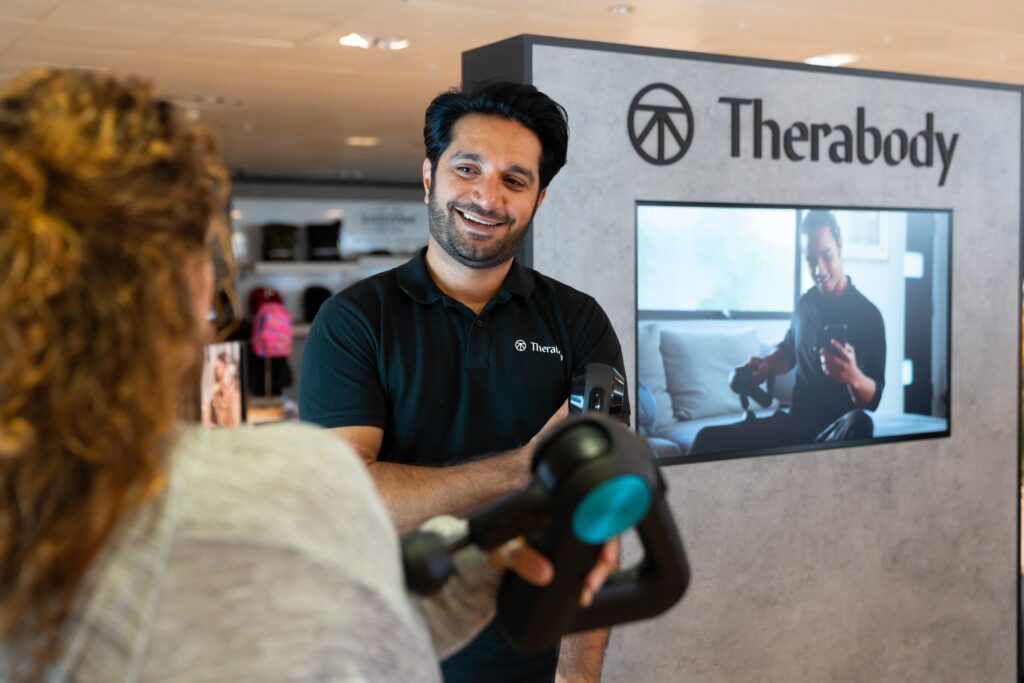Live e-commerce registers a 30% conversion rate, ten times higher than the average 3% in traditional e-commerce.
Today’s consumer expects to find their favourite brands wherever they may be. This means having a strong brand presence in both physical and virtual shopping spaces. Yet, transforming your physical or e-commerce business into one with an omnichannel offering has challenges, namely the capacity needed to function across multiple channels, siloed teams, budgets and attributing success to specific channels. Omnichannel management requires investment and expertise.
However, opening up the channels your business operates in is essential to realising your brand’s full potential and ensuring future success. One growing channel is live e-commerce, which registers a 30% conversion rate which is ten times more than the average 3% in traditional e-commerce.
As customers become increasingly splintered and interact with brands on different platforms, the need for a presence on every channel has become par for the course. However, customers have become more discerning as time has gone on, and as omnichannel shopping experiences have become more interesting and engaging, their demands have grown in sophistication.
By following some basic fundamentals that make an omnichannel shopping experience compelling and worth a customer’s time, most brands will be able to capture customers that may otherwise be lost.
What are the components of omnichannel shopping?
Whether it’s a social media channel, e-commerce website, or physical store, activity on each channel must be slightly modified to extract the most value from them. With this being said, these four common principles will help you keep every channel in good stead.
Consistent messaging
Having a variety of channels can lead to a disjointed experience for the customer, seeing different things on different platforms. Managing these platforms over months, or years can lead to divergence as different channels get varying levels of attention. The rewards for getting it right are there; brands that focus on increasing consistency see a 23% increase in revenue.
The customer journey also needs to be integrated. If a customer begins making a purchase on the mobile app, they should be able to log onto the website and find the incomplete purchase there. It’s what is expected today since customers will often flip between channels at their convenience. Content needs to be consistent too, customers should not see different tones of voice on different channels.
Customers expect and deserve a consistent experience across every channel the brand operates in.
Personalisation
As more business activity has moved online, the ability to track customers and gather data on their habits has proved invaluable. By understanding how customers shop and gleaning what they want from their shopping experience, brands can massively increase their sales with targeted marketing, promotions, recommendations and offers.
A 2022 Salesforce report showed that customers place a lot of importance on personalisation and customer experience. 73% said they expect companies to understand their unique needs and expectations, versus 66% in 2020. 62% believe a company should anticipate their needs, compared to 56% in 2020. Clearly, customers have become more comfortable sharing their data and having it benefit them.
Interactivity
The part of the shopping experience that can never be truly recreated online, is a customer seeing something with their own eyes, or touching it with their own hands. However, customers know this and it hasn’t negatively affected the growth of e-commerce in the 21st century, but increased conversions are possible with new strategies. Gucci set up Gucci Live in 2021, which consisted of an immaculately dressed storage space, accompanied by similarly immaculately dressed product experts in Florence. Customers could connect with product experts at the Florence centre, who would answer questions and show off products in an effort to give the customer that personal touch and human connection that is needed in the world of luxury.
The part of the shopping experience that is being recreated online, is the personal touch and human connection. A large part of the in-store experience is being able to speak to friendly, helpful assistants who know the products inside out. Slowly but surely, tech and luxury brands in particular are beginning to understand the importance of offering the human touch to customers, especially when they’re purchasing big-ticket items.
The Watches of Switzerland Group created a more personalised online experience to great success. Qualified customers would be transferred to trained and knowledgeable product experts, who would speak to customers over live video, show off products, answer questions and provide demonstrations. It led to a 5x increase in the conversion rate, and 54% increase in average order value for online customers supported by live assistance. Personalised service has increased conversions in-store, but the potential to increase conversions online is even greater since the concept, in terms of live video, is in a somewhat nascent stage.
This hugely improves the shopping experience by bringing customers closer to their products through live video and friendly, well-trained product experts.



Meeting your customers wherever they are
People connect with brands on a personal level, it’s not a case of seeing who offers the best product at the cheapest price. Customers value a brand that builds emotional connections with them and treats them as an individual, instead of an order number.
Social commerce allows a customer to begin and finish their journey on a social media app, such as TikTok. Social commerce reduces the number of funnels on a customer journey from five to three and creates a more convenient journey for both the brand and the customer. Currently, the biggest platforms are Facebook, Instagram, TikTok and Pinterest, respectively.
While Facebook and Instagram are larger, TikTok is by far the most rapidly growing social media platform in the world. Today, Facebook, Instagram and YouTube command more users, however, these social media platforms gathered their users over a longer period of time.
Brands like Nike and Sephora have set up their own shopping platforms on the app to great success. It acts as a one-stop shop for their customers, as they can view the product and adjacent products, and make the actual purchase, all on the same app they get their entertainment from. Social media commerce was a $800bn industry alone in the US in 2022 and is now worth $1tn in 2023. That number will only grow, and brands should be strategising about how they can get a piece of that pie.
Make full use of technology
A large part of optimising the omnichannel shopping experience is down to leveraging all of the tech tools available to brands. The reason why brands dig so deep into customer data is to unearth new insights and needs that aren’t being sufficiently served.
Interactive content and social commerce are two areas that have been combined strongly. Sage Appliances approached virtual selling events on TikTok Shop to great success in terms of sales and customer experience due to the customer-centric experience; it was all about classes and demonstrations, which were of use to viewers whether or not they purchased anything.
Modern omnichannel shopping relies on more expert knowledge of platforms and technology. Learning to use and master those tools could take years, so it is essential to have a partner that builds and maintains omnichannel shopping experiences. However, the rewards for being able to engage customers across every platform can be transformative, so it’s well worth thinking about a strategy and consulting with potential partners to attract and retain more customers to your brand.

